Have you heard of the Borinage region in Belgium? The Borinage region has a fascinating history, a beating heart of the Industrial Revolution. Its industry was part of the reason why Vincent Van Gogh was so attracted to the Borinage. If you’re interested in the letters of Van Gogh and Van Gogh’s influences, it is hard to disentangle the history of the Borinage from the history of Van Gogh. Keep reading to learn about Van Gogh’s life in Belgium.

Contents
- 1 Where is the Borinage?
- 2 About Vincent van Gogh’s early life
- 3 Coal Mining in the Borinage
- 4 Van Gogh’s Life and Van Gogh’s home in Belgium
- 5 Where did Van Gogh live? (Part I)
- 6 Van Gogh’s house in Petit-Wasmes
- 7 The Marcasse / Charbonnage de Marcasse
- 8 Where did Van Gogh live in Belgium? Part II
- 9 Maison Van Gogh in Cuesmes / Van Gogh’s House in Cuesmes
- 10 Getting to the Borinage
- 11 Overall about the Borinage
- 12 Are you a Van Gogh fan? Did you know about Van Gogh in Belgium?
- 13 Read more about Brussels & Day Trips from Brussels…
Where is the Borinage?
The Borinage is part of the Hainaut province of Wallonia in southern Belgium. The main city near the Borinage is Mons, a beautiful Belgian city with a rich feminist history, although Mons was the centre of the aristocracy in the region while the rest of the Borinage was the industrial hub of Belgium.
This area experienced a significant decline after coal mining stopped in the 1960s, however tech companies are now entering the region.
We were shown around this region by local guide Filip Depuydt, who is deeply passionate about the Borinage region and Van Gogh, as well as other local volunteers working to restore key sites integral to Van Gogh’s life in Belgium. We were embraced by locals excited to meet foreigners interested in the region.
We weren’t sure really want to expect of the Borinage region as most of the literature about the Borinage is focused on the life of Vincent van Gogh, however once we arrived, we felt an affinity with the region.
My husband grew up in Eastern Kentucky, one of the major coal mining regions of the US, which was heavily impacted by the decline of coal in the United States. Eastern Kentucky consistently ranks as one of the poorest regions of the US and after coal disappeared as an industry, the steady blue collar jobs that kept the region prosperous also disappeared.
The aftermath has been hard to recover from and the lush rolling landscape of the Appalachian Mountains has been marred by the scars of coal mining, including mountaintop removal and strip mining.
For us, the story of the Borinage felt familiar yet foreign. It’s not often that I feel an obligation to set the record straight about the place, but the Borinage deserves it and I found it fascinating to visit.
About Vincent van Gogh’s early life
Vincent van Gogh was born in Groot-Zundert in the Netherlands into an upper class family. His father was a minister as was his grandfather. Although van Gogh drew from an early age, he did not create his first painting until many years later. He briefly worked as an art dealer in the Netherlands prior to moving to London to work for an art gallery.
He fell in love with a girl who did not reciprocate his feelings–and his family arranged for him to move to Paris to work instead. However, Vincent Van Gogh was fired and he spent some time searching for his passion in life.
Around this time, Van Gogh decided to become a Protestant minister, however he failed the exam to enter theology school in the Netherlands, so he tried again in Brussels.
Unfortunately, preparing for becoming a minister didn’t excite him and Van Gogh ended up reading about the hardworking lifestyle of the Borinage. Van Gogh was inspired by the opportunity to finally help people, so he moved to Petit-Wasmes in the Borinage to work as a missionary.
Van Gogh was already disinherited by his family at this time, however he corresponded often with his brother Theo Van Gogh who also provided him with money as needed. The letters of Vincent Van Gogh provide a fascinating glimpse into Van Gogh’s life, thoughts, and influences.
To understand Van Gogh’s influences and why he moved to this region of Belgium, understanding the history of the Borinage, which is the history of the Industrial Revolution, is essential.
My mother loves Vincent Van Gogh’s work. There’s something mesmerizing about the brush strokes layered on top of each other and as a kid, I’d love to stand as close I could get to the painting to just study how Van Gogh painted it. Despite all this, I knew very little about his time in Belgium besides to the note in the Van Gogh museum in Amsterdam.
Coal Mining in the Borinage
With the advent of the Industrial Revolution, coal became immensely valuable. Belgium became a major industrial power in the 1800s, powered by the coal in Wallonia.
The Wallonian mines at this time were incredibly dangerous places and the region was infamous for its black air and houses (a result of industry). Luckily, the stains of industry have been removed off the buildings, only to reveal beautiful brick underneath.
In Van Gogh’s time, the actual coal mining was done in a fairly low-tech way within the mines with individual miners working in isolated corners with a lamp. Unlike other coal mining regions, which buried the excess generated by the coal industry, the Borinage has a unique topological feature still existing today as a result of its industrial history: slag heaps.
Despite Mons being nicknamed “Bergen” (mountain) in Flemish, the hills surrounding Mons in the Borinage are actually composed of excess from coal mining. Van Gogh’s house in Belgium actually had a view of one of these slag heaps and one of the most infamous coal mining complexes in the region: the Marcasse.
Van Gogh’s Life and Van Gogh’s home in Belgium
Where did Van Gogh live? (Part I)
Van Gogh moved into the house in Petit-Wasmes in 1879, however he found it to be too luxurious. He ended up refusing to use the house in an act of solidarity with his congregation, who mostly lived in small one story houses that lined the roads of the Borinage. He wrote to his brother at one point, “I should be happy if some day I could draw them,so that these unknown types would be brought before the eyes of the people.”
Around this time, Vincent Van Gogh refused to wear the standard clothes for a Protestant missionary and would often walk around in rags. The people of the Borinage loved him, however the church was less amused, eventually firing Van Gogh.
At one point, Vincent Van Gogh descended into the mines together with a member of his congregation at the nearby Marcasse. The Marcasse was visible from Vincent’s house.
Van Gogh’s house in Petit-Wasmes
You can visit Van Gogh’s house in Belgium, which still stands today. Unfortunately, it sat for many years abandoned despite having a plaque outside indicating its historical significance. Luckily, volunteers have worked to completely restore the house considering the considerable damage over the years, which is located in the town of Colfontaine.
The Van Gogh’s house is now a museum with copies of Van Gogh’s early works and copies of his letters describing his time in the Borinage. Maison Van Gogh has a distinct red outer paint coat, which they believe was the color of the house at the time. You can visit Van Gogh’s house on the weekends between 10am and 4pm.
The Marcasse / Charbonnage de Marcasse
The Charbonnage de Marcasse is a large industrial complex that at its peak had eleven mines. All the mines are sealed now, however volunteers are in the process of renovating the former complex into something that gives a glimpse into the harsh reality of coal mining and an understanding of Van Gogh’s influences shortly before he became a painter. The letters of Vincent Van Gogh had strong words about the Marcasse.
“Going down in a mine is an unpleasant business, in a kind of basket or cage like a bucket in a well, but then a well 500-700 metres deep, so that down there, looking upward, the daylight appears to be about as big as a star in the sky. One has a feeling similar to one’s first time on a ship at sea, but worse, though fortunately it doesn’t last long.
The workers get used to it, but even so, they never shake off an unconquerable feeling of horror and dread that stays with them, not without reason or unjustifiably. Once down there, however, it isn’t so bad, and the effort is richly rewarded by what one sees.”
The Marcasse was a particularly infamous mine with many accidents claiming countless over the years. It was finally shut down in the 1960s after one such mining accident.
You can still see the 700-meter mine shaft that Vincent Van Gogh went down into. Additionally, you can drink a beer inspired by Vincent Van Gogh himself.
Filip, Nadine, and other volunteers commissioned custom-made beers from a local beer producer that were really tasty. (Bring some extra euros.) I got an Amber Ale while my husband bought the Marcasse Blonde. I highly recommend them.
You can also hike along the slag heap as well as explore part of the Marcasse (not all of it is safe at this point as there are some holes in the ceilings).
In the future, they hope to create an artists’ residency here, however if you’re into abandoned(ish) places with a rich history, you need to visit the Marcasse, which is a great day trip from Brussels.
Where did Van Gogh live in Belgium? Part II
Maison Van Gogh in Cuesmes / Van Gogh’s House in Cuesmes
In 1879 and 1880, Van Gogh moved into a miner’s home (that happens to be very slanted) in the city of Cuesmes. He lived in an adjoining wing that does not exist anymore, however Maison Van Gogh itself remains in good condition thanks to some renovations.
Van Gogh would give religious lectures within the home and began learning more about drawing techniques (thanks to his brother’s willingness to pay for books) around this time.
After losing his job as a missionary, he became more interested in painting and eventually chose to wander the region in between France and Belgium prior to returning to the Netherlands where he became the Van Gogh that we all know well.
In the Maison Van Gogh, you’ll find early sketches from Van Gogh. In these early sketches, you can see Vincent Van Gogh’s influences: the peasant genre (part of the Realism movement at the time), which showed the lives of peasants in contrast to the many paintings of aristocrats.
I was shocked by how different his early sketches (those that remain as many were destroyed by Van Gogh himself). Van Gogh’s first painting was not finished until much later, but it followed the same key themes: sympathy and portrayal of the peasants.
Van Gogh’s first painting, the Potato Eaters, portrayed Dutch farmers in a dark home that some say was influenced by his time in the Borinage.
Even as a Van Gogh fan, I never knew about Vincent Van Gogh’s deep sympathy for the working class, his beautiful writing, and about his time in the Borinage. He continued to speak about how the Borinage inspired him prior to his death although he never revisited in his lifetime.
Coal mining in the Borinage during the Industrial Revolution (part II)
Large industrial complexes arose all throughout the region, most with questionable safety standards, although a few remain mostly intact. This includes the Reserve du Marcasse and the Grand Hornu complex (UNESCO recognized). The Grand Hornu industrial complex is one of the best preserved industrial complexes from this time and it now houses the largest contemporary art exhibition in Wallonia.
With the demand for coal rising, industrialists built some of the first railroads in Europe to help transport large amounts of coal. The railroads crisscrossed the Borinage region in a vast network. Following the collapse of coal, these railways became disused and the Wallonia region is in the process of building a large biking network along these former railways, perfect for long distance biking.
Getting to the Borinage
Mons is 40 minutes by train from Brussels, however a car is best for getting around the Borinage region. It is possible to visit the Borinage without a car with some effort put into the bus schedules. The Borinage is about one hour from Brussels without traffic and about 20-30 minutes from Mons, so staying in Mons for a weekend would be easiest.
There are a number of biking routes around the region if you’re interested in doing a bike tour around the Borinage. Filip and other volunteers do a tour a couple times of a year of the Van Gogh sites, although you need to book ahead as they’re popular.
Overall about the Borinage
The Borinage is a surprising region to visit with much to offer beyond what people expect from learning about an artist’s history in a region. The residents of the Borinage are proud of their history.
Even the slag heaps are protected sites sporting vegetation (which we found curious given that in the U.S., the vestiges of a mining operation are legally required to be cleaned up and are considered very environmentally damaging).
I found the region surprising and fascinating. Even my husband, who generally is not into impressionism and does not care for Van Gogh, was surprised how much he felt an affinity for the region after learning about the history of the Borinage. If you’re looking a different day trip from Brussels or Mons, consider visiting the Borinage.
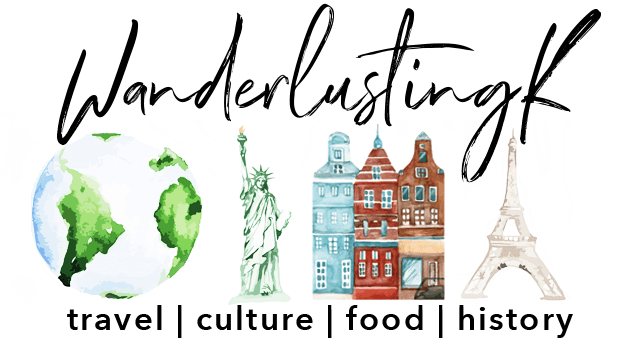
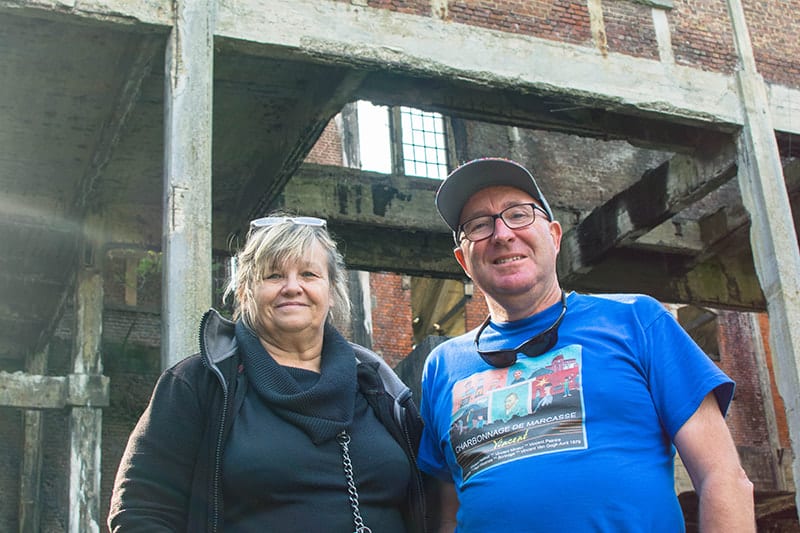
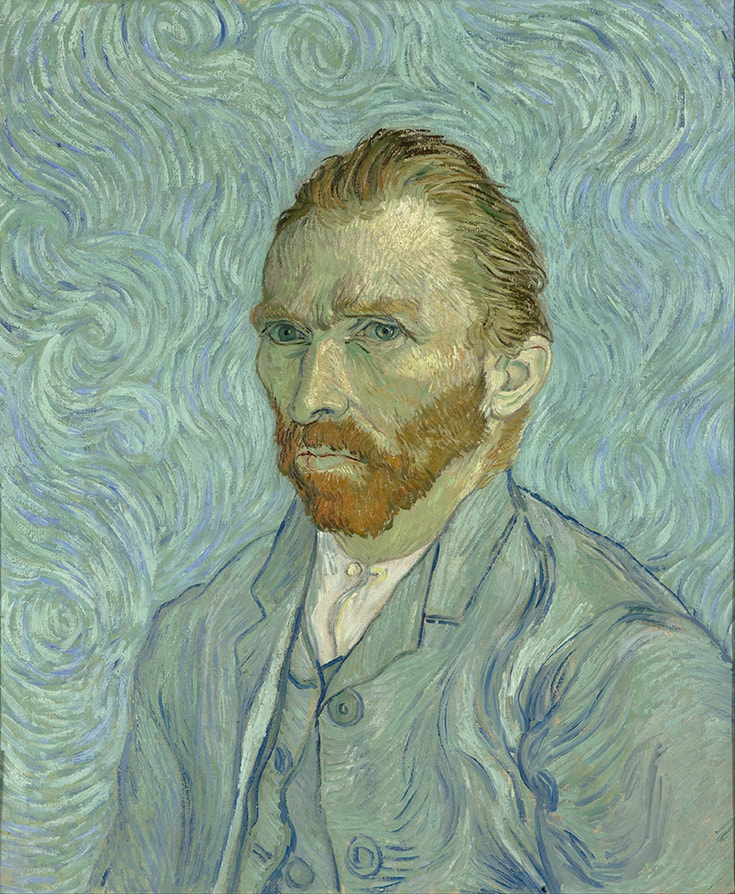
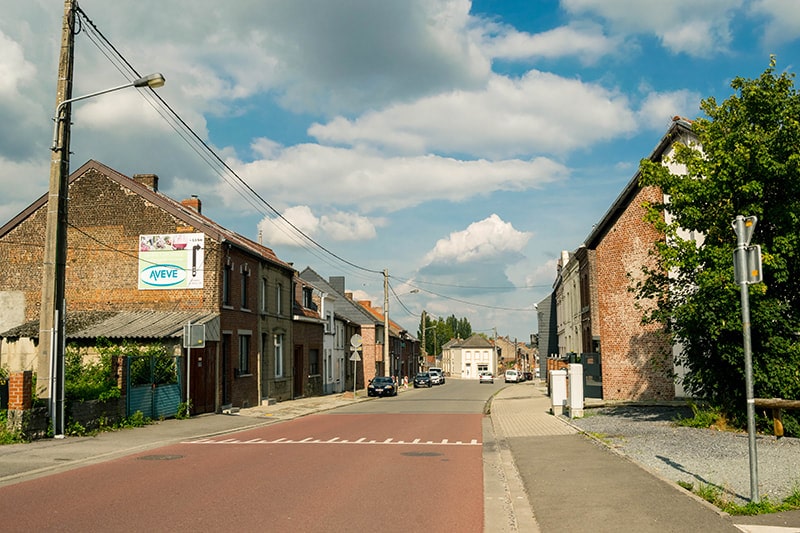
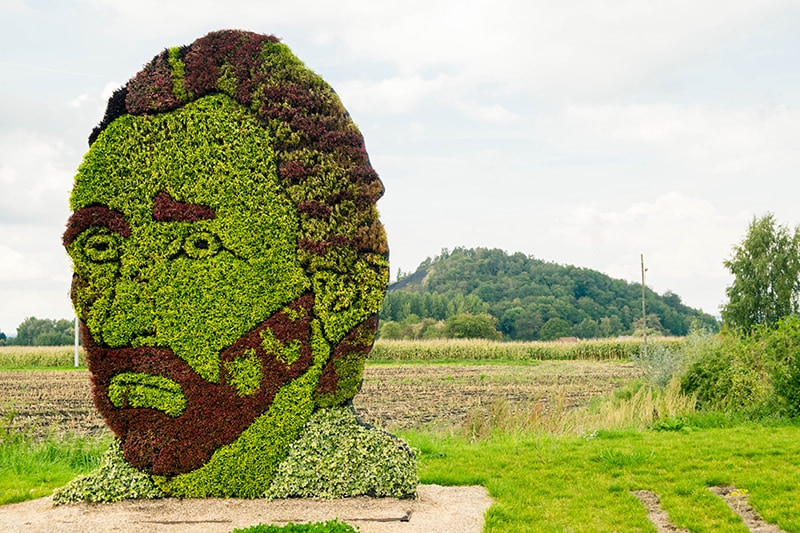
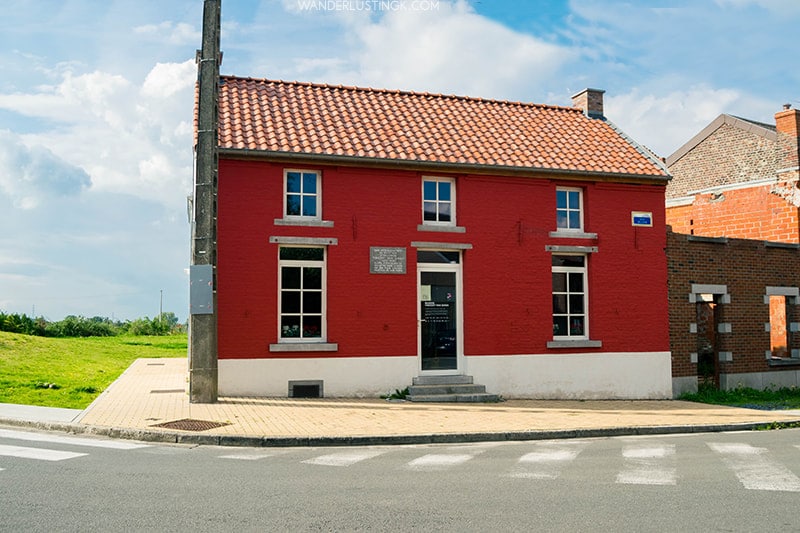
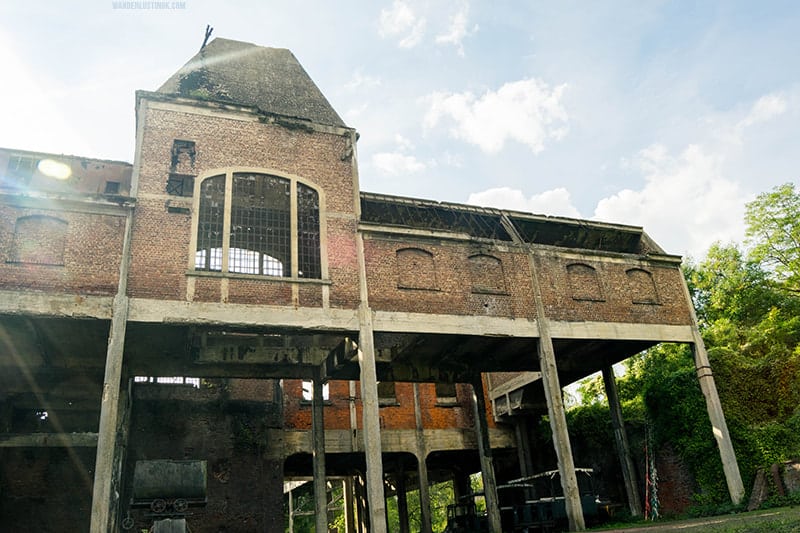
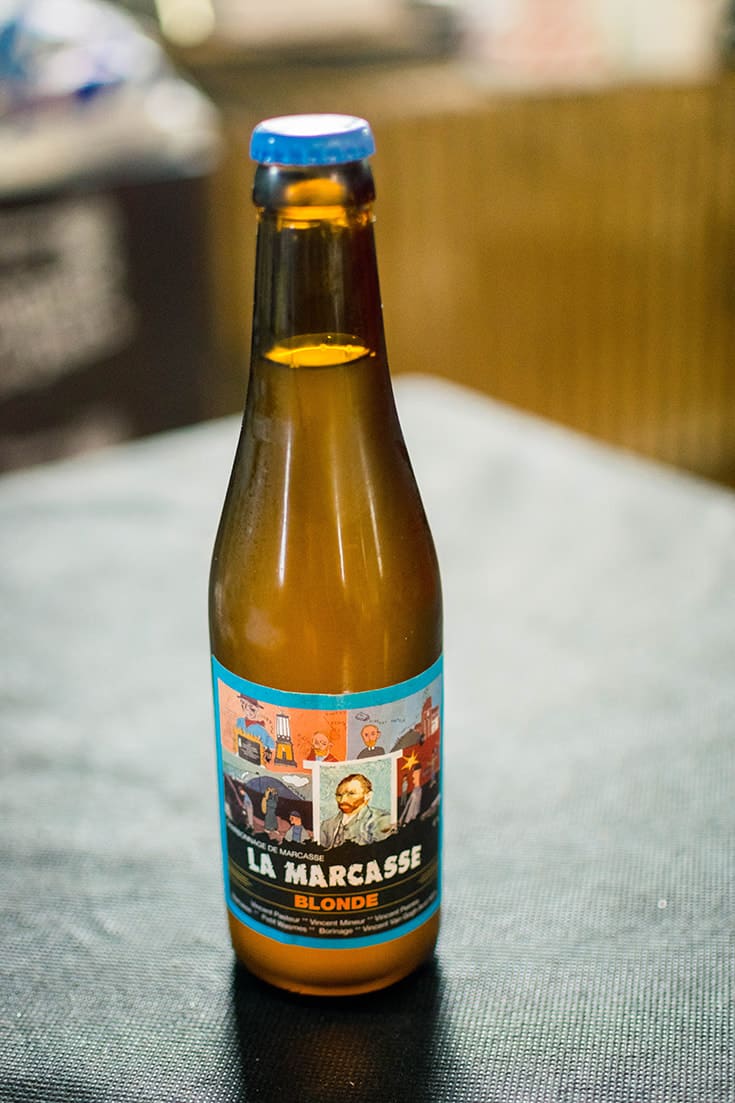
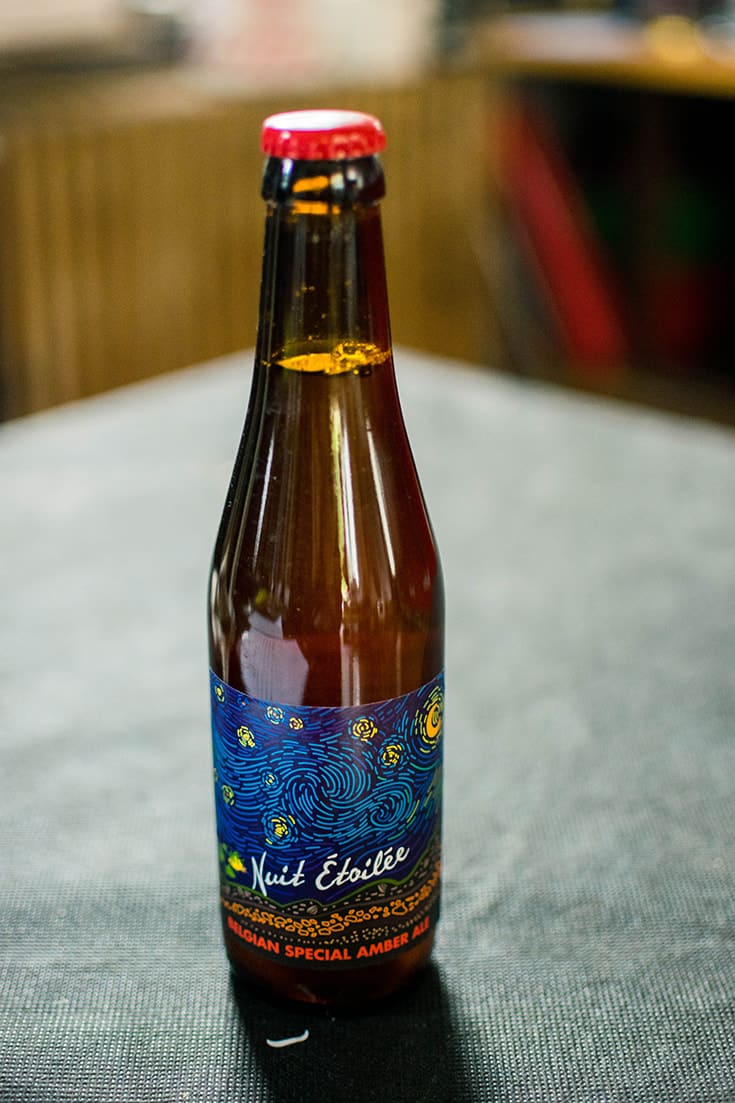
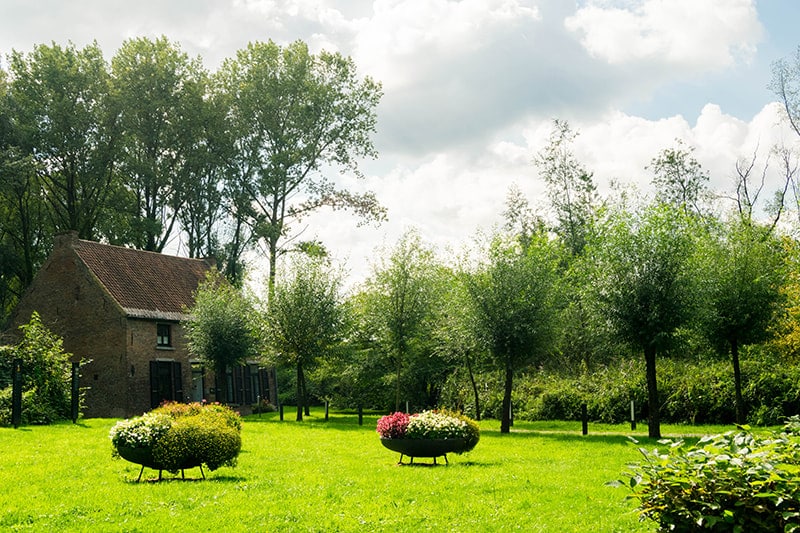
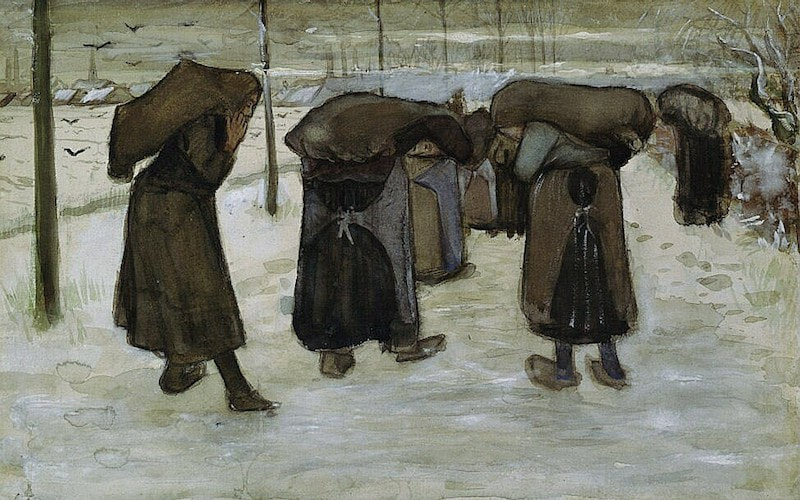
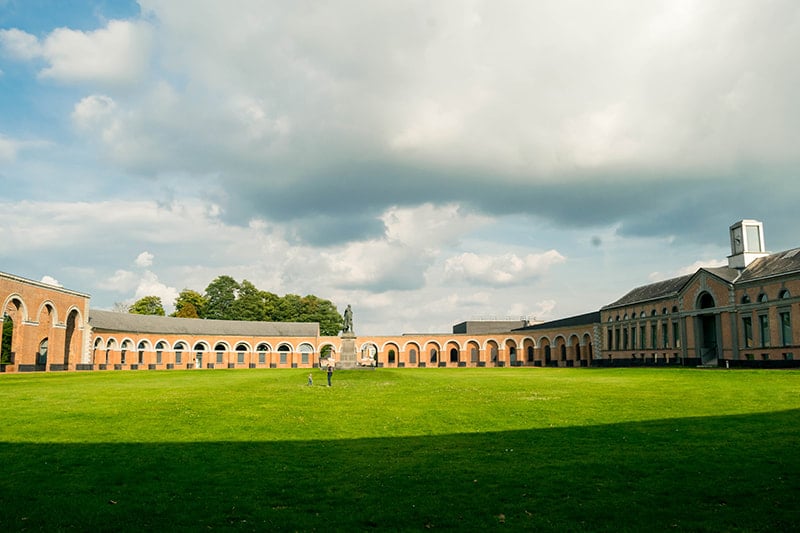

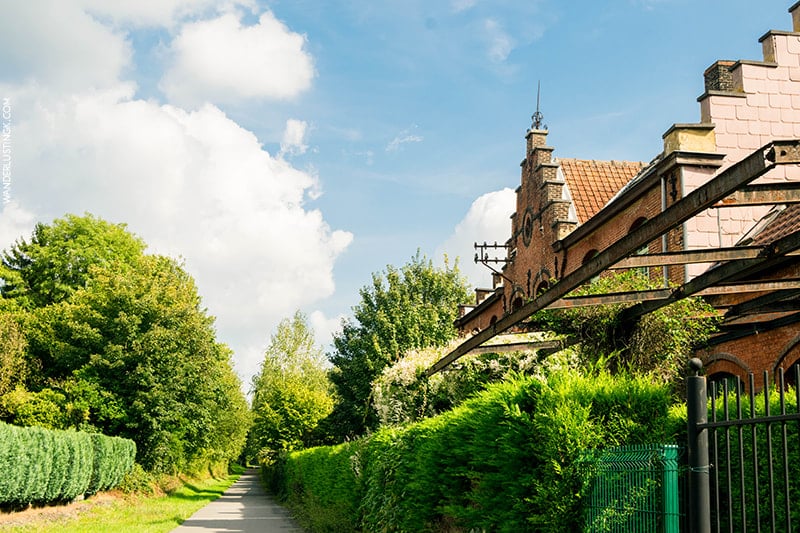
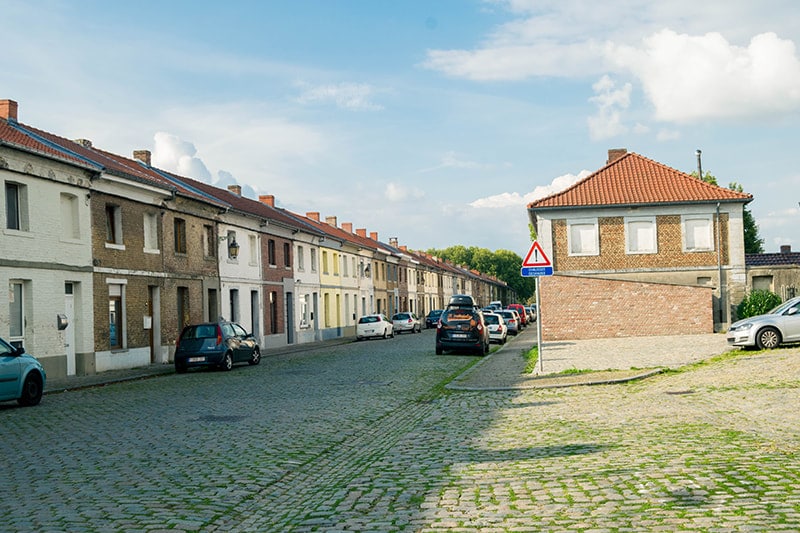
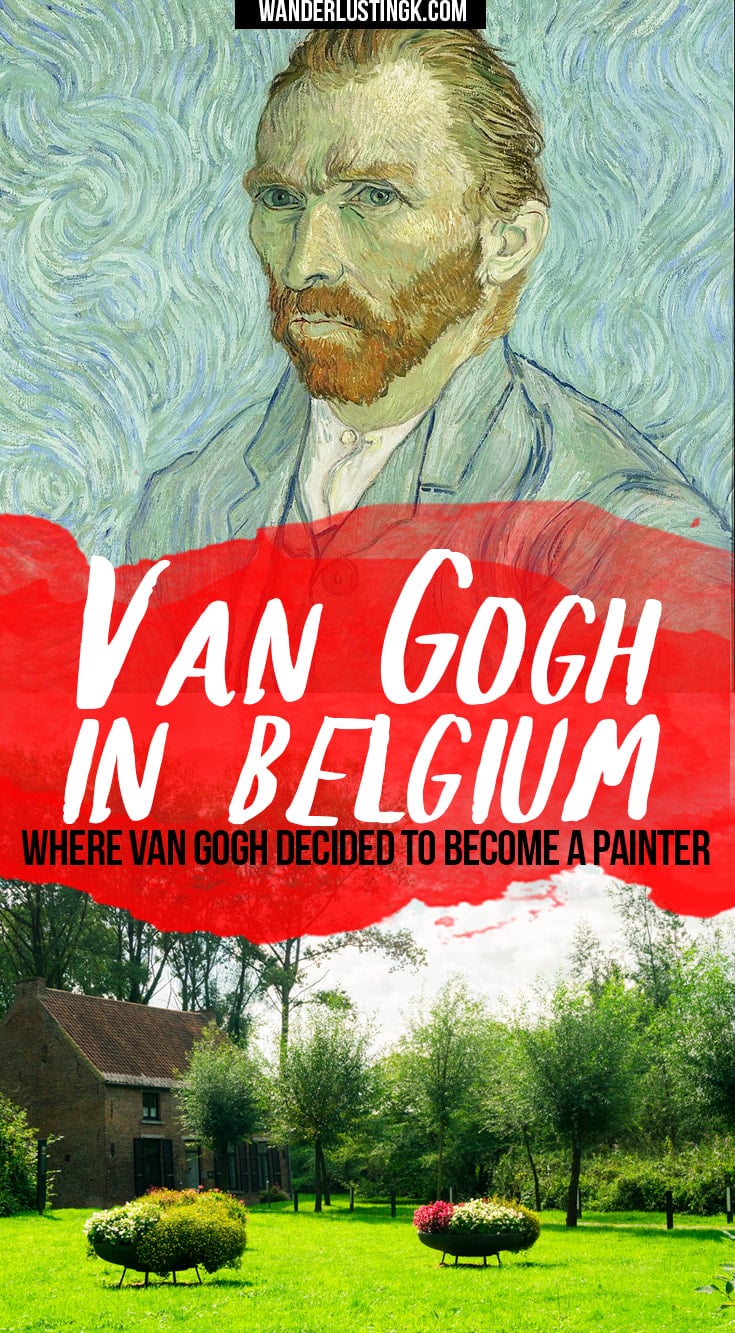
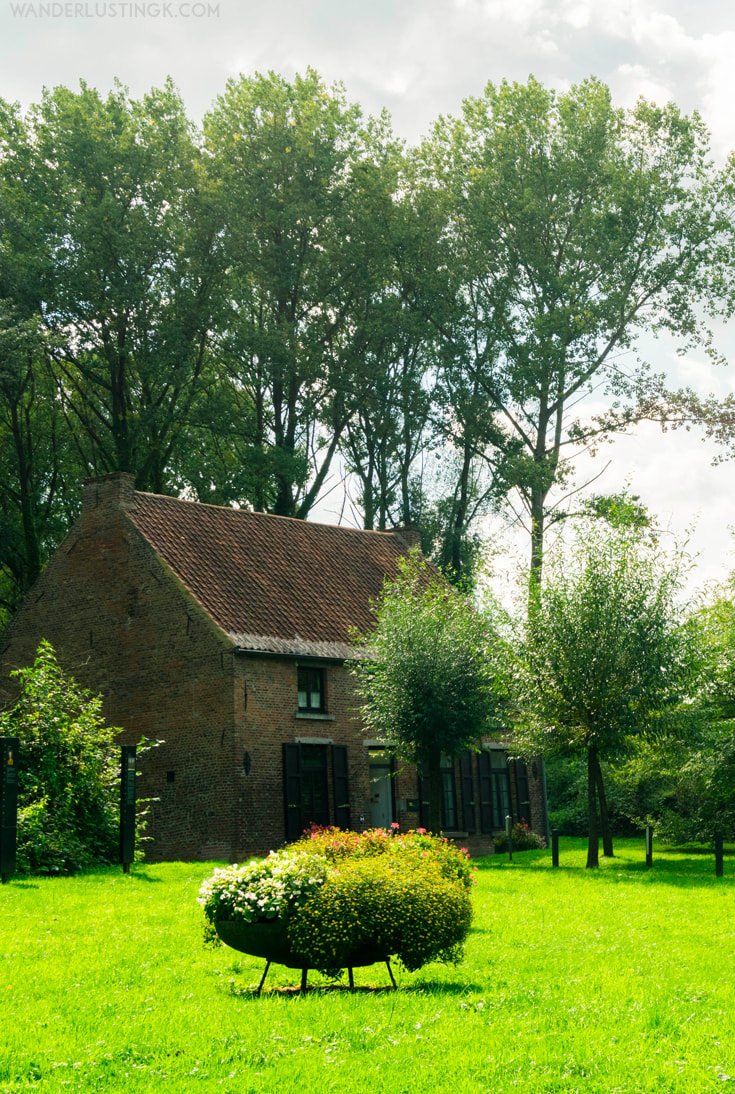
I didn’t know about Van Gogh in Belgium! I have been fortunate to visit the amazing museum in Amsterdam though. 🙂 I really love that Van Gogh portrait with the plants – beautiful!
Really fascinating tale.The connection with the coal mining in the region is really fascinating. Love the pic of the Van Gogh tree art!!!!
Very interesting! I grew up near where Van Gogh lived in The Netherlands (Zundert) and know of all the places he lived in The Netherlands, but I wasn’t quite aware he lived in Belgium too. Great read, thank you!
Hello Esther. You’re always welcome to visit the Van Gogh places in the Borinage. I already had the chance to visit Zundert, Etten-Leur and Nuenen.
Best.
Filip
I had no idea he had a connection to Belgium. Such an interesting history! I love that he considered that first house to be too luxurious 😀
This is fascinating! I never knew anything about this area or this part of Van Gogh’s history (in fact, I don’t know a lot of his history anyway to be honest!). Really interesting read, thank you. 🙂
Hello.
You should read letters 148 to 158 on the http://www.vangoghletters.org website. You’ll learn a lot about Vincent’s stay in the Borinage.
Always welcome to come over !
Warm regards,
Filip
This history is utterly fascinating. Esp as someone who originated from steel country, USA (which had a similar decline when steel was outsourced to China). I am very familiar w/ eastern Kentucky and know the history and how it has affected the residents… so seeing this in other parts of the world really hits close to home. And it is all so intertwined w/ Van Gogh… which makes it all that much more intriguing. Great post (esp about an area I am terribly unfamiliar with!)
Hello Megan.
You should read letters 148 to 158 on the http://www.vangoghletters.org website. You’ll learn a lot about Vincent’s stay in the Borinage.
Always welcome to come over !
Warm regards,
Filip
Van Gogh is one of my favorite painters. He was a very interesting person. I’ve never thought to visit his home though! I’m adding this to my travel to-do list!
I had never heard of this region before, but it sounds like it is full of fascinating history! I would love to learn more and see more of the sites from Van Gogh’s life. I love that they even let Van Gogh influence their beer. This is definitely going on my travel hit list.
Hello. I am a huge Van Gogh fan and though I’ve visited the museum in Amsterdam as well as his grave side, in France, I have not had the opportunity to visit Belgium. Well, I may be housesitting in Mons for the month of July and came across your site. Do you know if you will be giving the bike tour around the Van Gogh sites during this time? Thanks in advance.
Hi Paula,
I personally don’t do the tours, however you can contact Filip Depuydt (whose information you’ll find in the link by my name). He’s a local who does the tours (including the one that I went on) and it’s better to contact him directly.
I hope you have a great time house sitting in Belgium. The region is really fascinating!
Best,
Karen
hello karen my dad worked in a coal mine hornu belgium in the 1950’s. never told me the name of the mine but i remember the row houses we lived in. cant find it on the present day maps but i do remember my grandmothers funaral in st martins church in 1954. i just can’t find pictures of the area from the 1950’s i didn’t even know about van goh living the area thank you